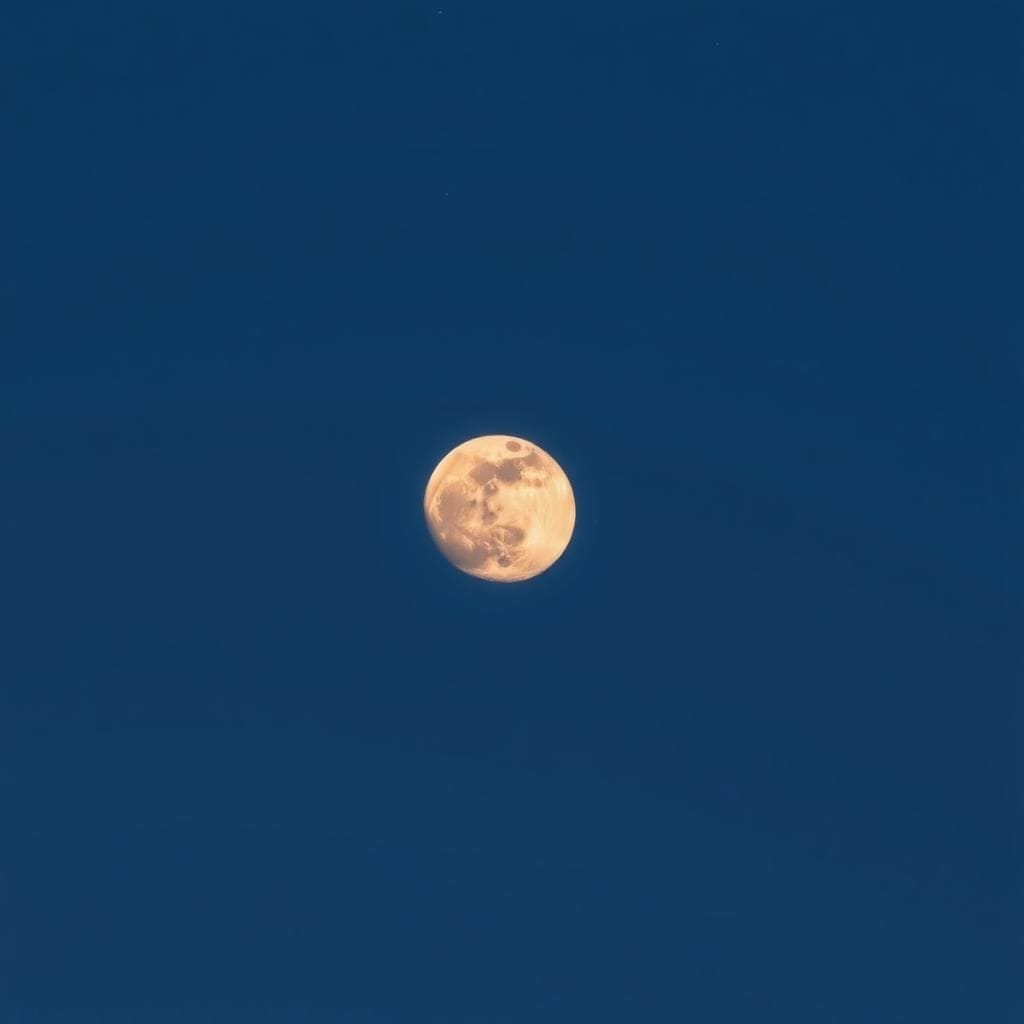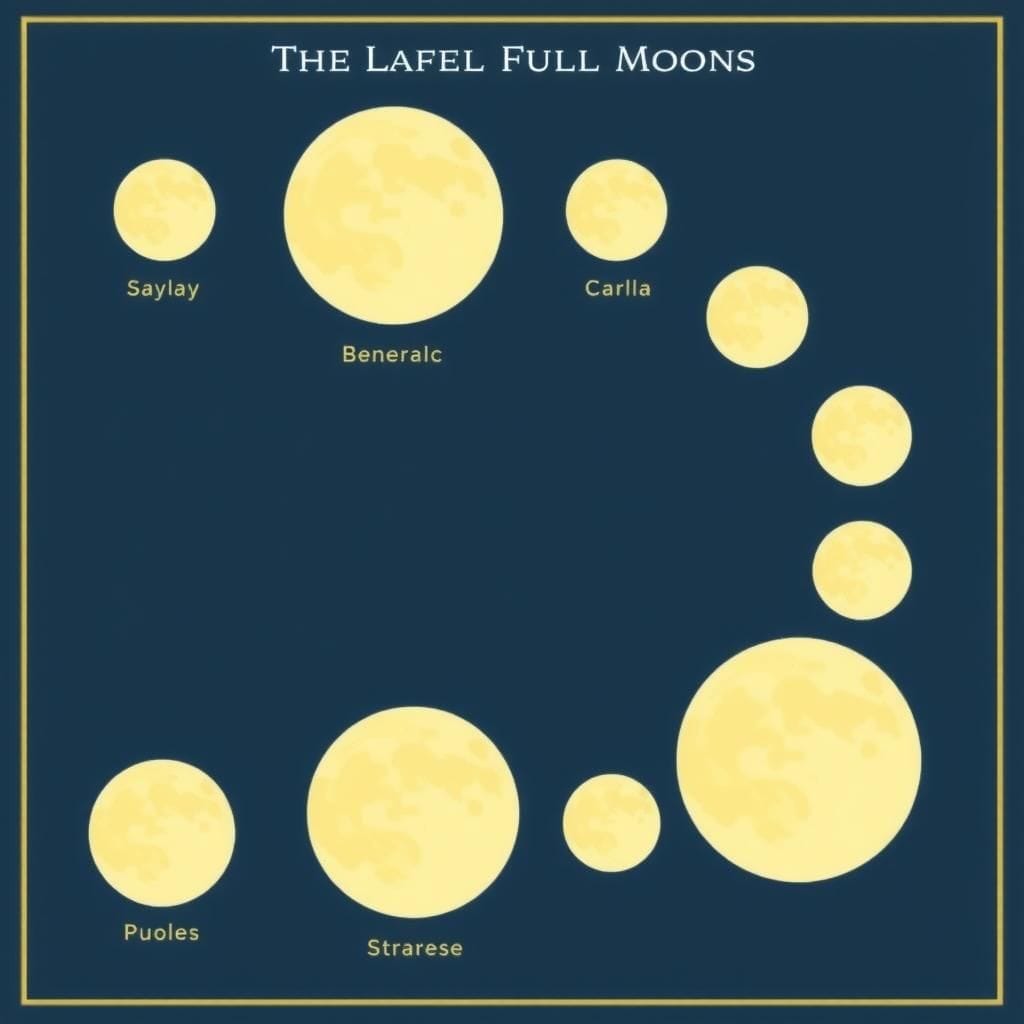When Is the Next Full Moon?
The next full moon will occur on Saturday, April 12, 2025. It will officially reach its full moon phase at 8:22 p.m. EDT (00:22 GMT on April 13). However, local moonrise times vary depending on geographic location. To the casual observer, the moon will appear full on the nights both preceding and following this date.
In reality, the full moon is rarely perfectly full, as we always observe the same lunar hemisphere while a portion remains in shadow due to the moon’s rotation. Only when the moon, Earth, and the Sun align precisely does the moon appear 100% full.
On rare occasions—commonly referred to as “once in a blue moon”—the moon reaches its full phase twice within a calendar month or four times within a season, depending on the chosen definition.
For those interested in ongoing celestial events, our night sky live blog provides real-time sky watching updates. Additionally, our monthly sky watching guide highlights notable astronomical phenomena.

How to Observe the Full Moon
For individuals seeking an in-depth exploration of the lunar surface, our comprehensive guide to moon observation offers insights into lunar seas, mountainous formations, and the vast network of impact craters. Furthermore, our Apollo landing sites guide details the locations where astronauts, robotic rovers, and lunar landers have explored.
Essential Guides for Lunar Observation
- What Is the Moon Phase Today? A reference for daily lunar phases throughout 2025.
- Full Moon Names 2025: The cultural and historical significance behind each full moon’s designation.
- Astrophotography Essentials: Learn how to capture breathtaking lunar images with our guides on photographing the moon and lunar eclipses.
- Equipment Recommendations: Enhance your lunar viewing experience with our expertly curated selections of best binoculars, telescopes, cameras, and lenses for astrophotography.
Full Moon Dates for 2025
According to NASA’s SKYCAL, the following are the full moon occurrences for 2025:
| Date | Name | U.S. Eastern Time | GMT |
|---|---|---|---|
| January 13 | Wolf Moon | 5:27 p.m. | 22:27 |
| February 12 | Snow Moon | 8:53 a.m. | 13:53 |
| March 14 | Worm Moon | 2:55 a.m. | 07:55 |
| April 12 | Pink Moon | 8:22 p.m. | 01:22 (April 13) |
| May 12 | Flower Moon | 12:56 p.m. | 17:56 |
| June 11 | Strawberry Moon | 3:44 a.m. | 08:44 |
| July 10 | Buck Moon | 4:37 p.m. | 21:37 |
| August 9 | Sturgeon Moon | 3:55 a.m. | 08:55 |
| September 7 | Corn Moon | 2:09 p.m. | 19:09 |
| October 6 | Harvest Moon | 11:48 p.m. | 04:48 (Oct. 7) |
| November 5 | Beaver Moon | 8:19 a.m. | 13:19 |
| December 4 | Cold Moon | 6:14 p.m. | 23:14 |
The Significance of Full Moon Names
Throughout history, various cultures have designated unique names to each month’s full moon, typically influenced by seasonal changes. The Farmer’s Almanac records commonly used full moon names in the United States, with many deriving from Algonquin tribal traditions spanning from New England to Lake Superior. Additionally, European settlers incorporated their own lunar nomenclature.

Chinese Moon Names:
| Month | Name | Month | Name |
| January | Holiday Moon | July | Hungry Ghost Moon |
| February | Budding Moon | August | Harvest Moon |
| March | Sleepy Moon | September | Chrysanthemum Moon |
| April | Peony Moon | October | Kindly Moon |
| May | Dragon Moon | November | White Moon |
| June | Lotus Moon | December | Bitter Moon |
Similarly, the Southern Hemisphere follows an alternate moon-naming tradition, reflecting seasonal reversals compared to the Northern Hemisphere.
Understanding the Moon’s Phases
The moon is a spherical celestial body that orbits Earth every 27.3 days. Since its rotational period matches its orbital period, the same lunar hemisphere perpetually faces Earth. The lunar phases result from varying solar illumination angles, producing the following sequence:
- New Moon – The moon is positioned between Earth and the Sun, rendering it invisible.
- Waxing Crescent – A thin crescent begins to appear as the lunar surface receives increasing sunlight.
- First Quarter – The moon reaches a 90-degree angle from the Sun, appearing half-illuminated.
- Waxing Gibbous – The illumination expands beyond half of the moon’s visible surface.
- Full Moon – The Sun, Earth, and the Moon align, illuminating the entire visible lunar disk.
- Waning Gibbous – The illumination gradually decreases, transitioning toward the third quarter.
- Third Quarter – The moon is once again half-lit, but the opposite hemisphere is now visible.
- Waning Crescent – The moon’s illumination diminishes, leading back to the new moon phase.
Lunar and Solar Eclipses in 2025
Lunar eclipses occur when the full moon passes through Earth’s shadow:
- March 14, 2025 – Total Lunar Eclipse
- September 7, 2025 – Total Lunar Eclipse
Solar eclipses, on the other hand, take place when the moon obstructs the Sun’s light:
- March 29, 2025 – Partial Solar Eclipse
- September 21, 2025 – Partial Solar Eclipse
Final Thoughts
Each full moon presents a unique opportunity to observe the lunar surface, track celestial movements, and engage in astrophotography. Whether you are an amateur stargazer or an experienced astronomer, planning ahead with the full moon calendar ensures an enriched sky watching experience throughout 2025.
When will the next full moon occur?
The next full moon will occur on Saturday, April 12, 2025, at 8:22 p.m. EDT (00:22 GMT on April 13). The moon will appear full on the nights preceding and following this date, but the precise full moon phase will occur at the given time.
Why does the full moon appear to change shape?
The full moon may appear less than perfectly full due to the moon’s rotation, which keeps the same hemisphere facing Earth. Only when the moon, Earth, and Sun align exactly does the moon appear 100% full.
What is a “blue moon”?
A “blue moon” refers to a rare event when the moon reaches its full phase twice within a calendar month or four times within a season, depending on the definition.
How can I observe the full moon?
For an in-depth exploration of the moon’s surface, check out our comprehensive guide to moon observation, including details on lunar seas, mountains, and impact craters. We also have a guide on the Apollo landing sites.
Where can I find more information on lunar events?
For ongoing updates on celestial events, check our night sky live blog. Our monthly sky watching guide highlights significant astronomical phenomena, too.
Are there any essential guides for lunar observation?
Yes! Our guides include “What Is the Moon Phase Today?” for daily lunar phases, “Full Moon Names 2025” for cultural significance, and tips on astrophotography and equipment recommendations for better lunar viewing.
What are the full moon dates for 2025?
Here are the full moon dates for 2025:
January 13 – Wolf Moon
February 12 – Snow Moon
March 14 – Worm Moon
April 12 – Pink Moon
May 12 – Flower Moon
June 11 – Strawberry Moon
July 10 – Buck Moon
August 9 – Sturgeon Moon
September 7 – Corn Moon
October 6 – Harvest Moon
November 5 – Beaver Moon
December 4 – Cold Moon
What do full moon names mean?
Full moon names have cultural and historical significance. Many names come from Native American traditions and reflect seasonal changes, such as the “Wolf Moon” in January or the “Harvest Moon” in September. There are also distinct names used in Chinese and Southern Hemisphere traditions.
How does the moon’s phase work?
The moon’s phases are a result of varying solar illumination as the moon orbits Earth. The sequence goes from New Moon to Waxing Crescent, First Quarter, Waxing Gibbous, Full Moon, Waning Gibbous, Third Quarter, and finally Waning Crescent before returning to New Moon.
Are there any lunar or solar eclipses in 2025?
Yes! In 2025, there will be the following eclipses:
Lunar Eclipses:
March 14 – Total Lunar Eclipse
September 7 – Total Lunar Eclipse
Solar Eclipses:
March 29 – Partial Solar Eclipse
September 21 – Partial Solar Eclipse
How can I make the most of sky watching?
Plan ahead by checking the full moon calendar, learning about lunar observation, and using the best equipment for stargazing and astrophotography.
